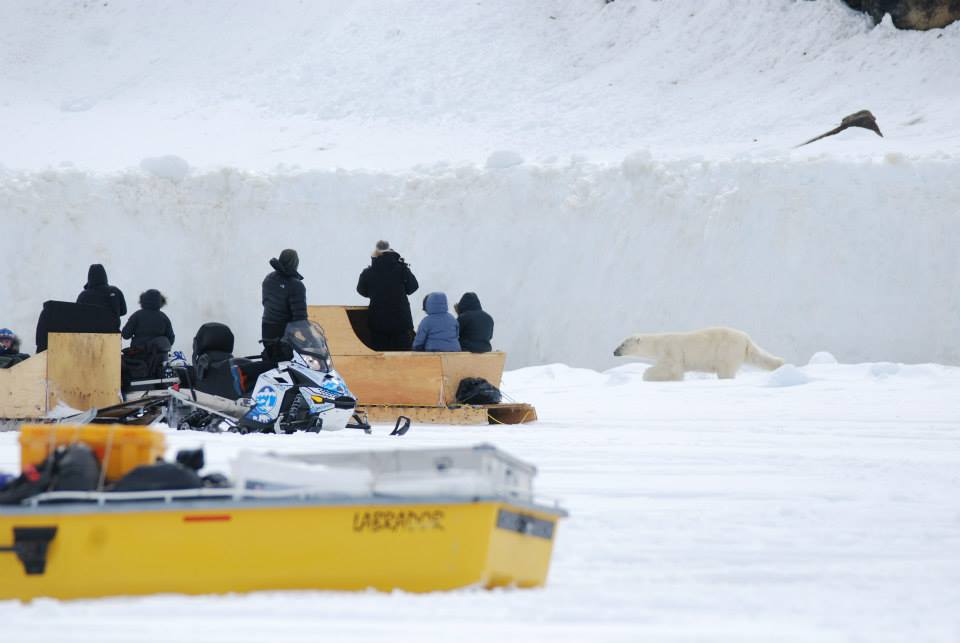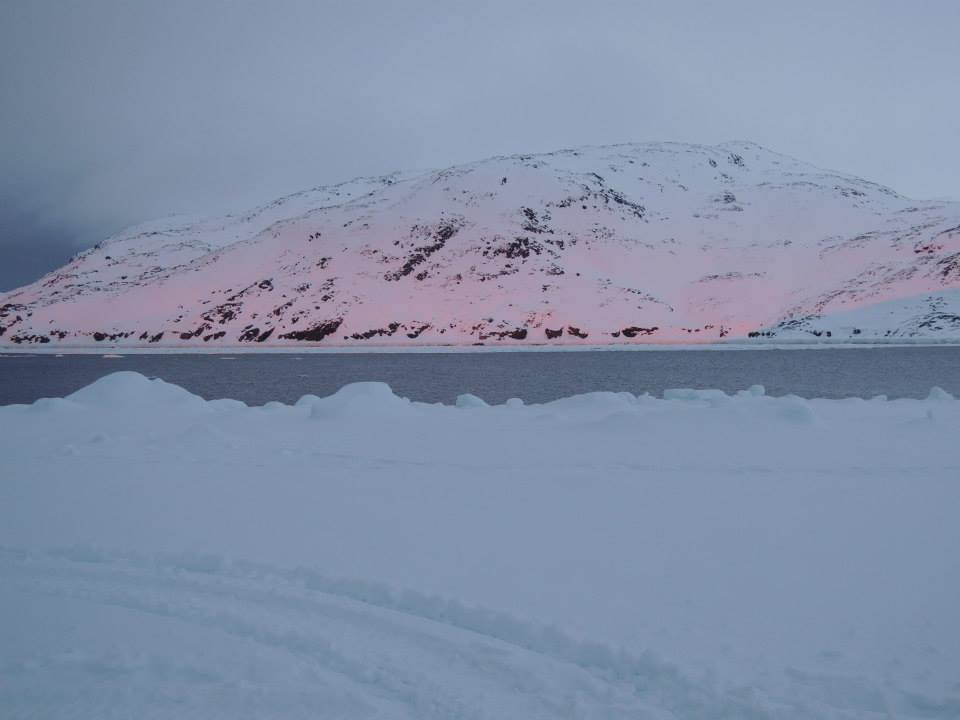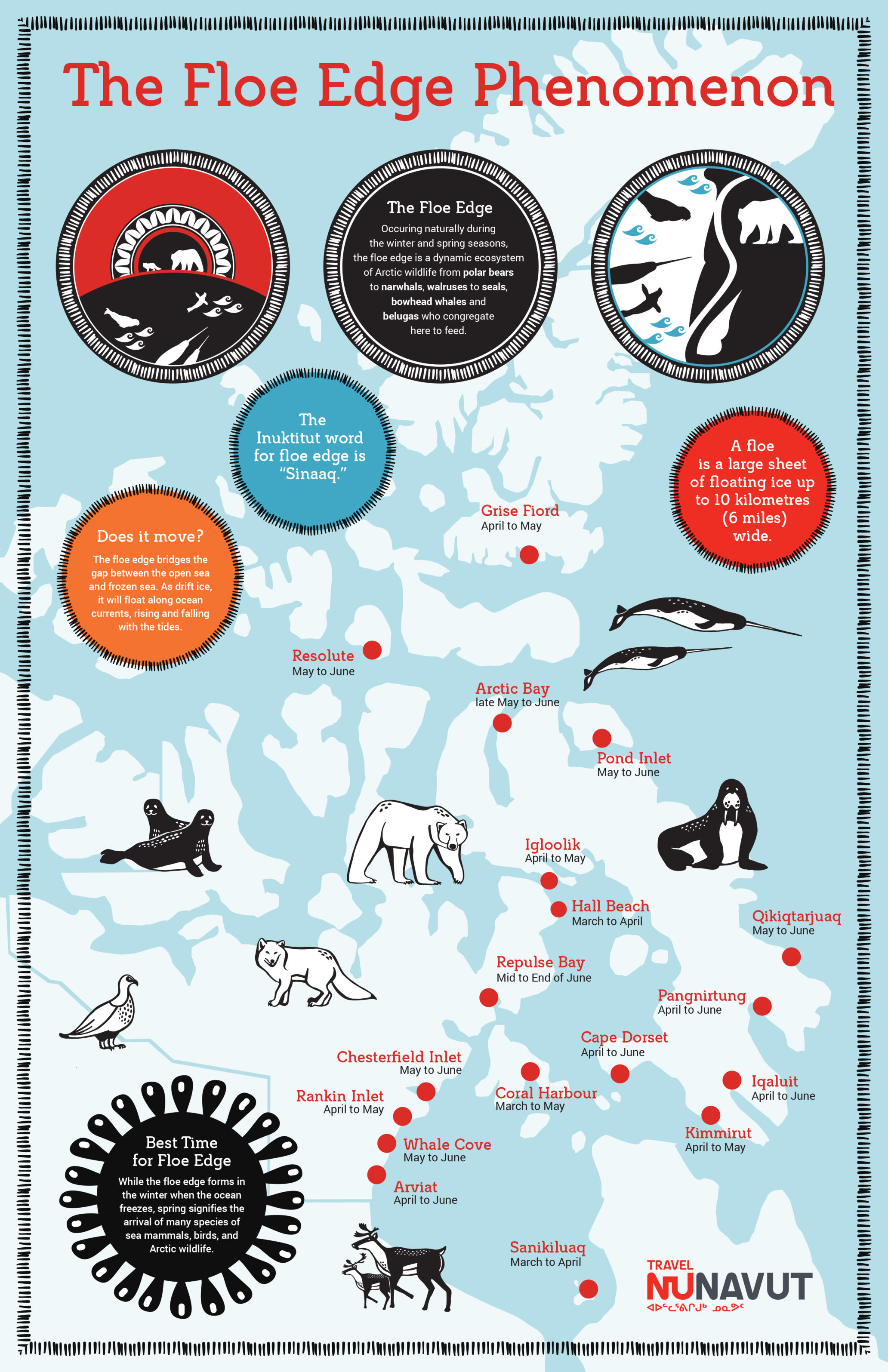Expert local guides enable you to experience this stunning natural phenomenon.
The earth has a heartbeat; it pulses with the changing seasons. The animals and plants who inhabit our planet are closely attuned to this rhythm, moving and changing in accordance with our orbit around the sun. Summer is for flourishing, fall is a time of harvest and preparation, winter is a period of austerity and rest. And in the spring, the snow melts, the ice cracks and life bursts forth, ready to begin the journey all over again. To see a true representation of the beautiful synchronicity of nature, and the cacophony of life that spring ushers in, one needs only to visit the floe edge.
For thousands of years, the Inuit have followed these natural patterns of the land and animals, as fishing and hunting are essential to the Northern way of life.
“It’s the hunting cycle, the animal cycle, and the way we move,” says Alex Flaherty, owner of the 100% Inuit-owned and -operated Polar Outfitting.
“When spring comes we’ll start looking for birds, seal pups, and whales. In the spring they will all congregate together at the floe edge, and that’s where we spend a lot of time.”

Lucky travelers will spot polar bears stalking the gathering wildlife at the floe edge.
Spring (generally between April and June in Nunavut), when the land-fast ice begins to break apart, is a time when sea mammals, ground animals, and birds will gather at the ice’s edge. The result is not only a terrifically successful hunting ground, but some of the best Northern wildlife viewing a visitor could dream of.
“All the birds are mating, all the whales are coming more inland
to feed,” says Flaherty. “It’s just a really good time of the year to be a hunter, to be a harvester, and to be a tourist.”
Many companies in Nunavut offer guided floe edge experiences (see a list of guides and outfitters here), which usually consist of a base camp set up near the water’s edge, reached by snowmobile from the community. From there, guided excursions will give visitors the opportunity to view sea birds, seals, walruses, polar bears, narwhal, beluga, and bowhead whales. Since springtime varies from region to community in Nunavut, the best locations and times to take a guided tour onto the ice have been mapped out so you won’t miss this lively congregation.
Flaherty recalls a 2017 excursion where visitors were treated to an extraordinary encounter with marine mammals. “Last year, for four days straight, we saw hundreds of narwhals and belugas pass by on a daily basis,” he says.
“If you’re at sea level, you can only see their backs come up out of the water, so we take our clients up to a higher elevation so that you can actually see them swimming in the water. You can even see the way they travel with their young.”
Although this particular ecosystem is famously teeming with life, Flaherty notes that when it
comes to wild animals, nothing is for certain. “If there aren’t animals around, we will go out and look for them,” he says. “We take clients out skidooing to look for nesting grounds and seals. But we always keep our distance, and we never guarantee anything.” The same can be said for the land itself, which is known for weather that can change with little notice. Inclement conditions in Nunavut often mean that excursions will be cancelled for safety reasons, so having
an alternate plan for your visit is always recommended.
Some experiences in Nunavut can be undertaken independently by particularly skilled travelers, but trips to the floe edge should always be accompanied by a guide. “You have to know how to navigate the ice in order to safely visit the floe edge,” says Flaherty. “Ice safety is a big concern, and so are polar bears. Having the proper guide is what makes the experience safe, and also worthwhile.” Expert local guides lead excursions using their knowledge of the land and migration patterns, as well as modern technology like a hydrophone to pinpoint the location of large sea mammals.

Where the ice meets open ocean, the scenery is stunning and otherworldly.
To say that visiting the floe edge is an unforgettable adventure would be an understatement. Even for those who are able to witness it yearly, words often fail to capture the experience. “It’s hard to describe,” says Flaherty. “It’s just spectacular.” With the right guide, and just a little bit of luck, the magnificence of the floe edge phenomenon might become a memory that stays with you forever.
Best Floe Edge Months of the Year
| Community | Time Range |
|---|---|
| Arctic Bay | Late May to June |
| Arviat | April to June |
| Cape Dorset | April to June |
| Chesterfield Inlet | May to June |
| Coral Harbour | March to May |
| Grise Fiord | April to May |
| Hall Beach | March to April |
| Igloolik | April to May |
| Iqaluit | April to June |
| Kimmirut | April to May |
| Pangnirtung | April to June |
| Pond Inlet | May to June |
| Qikiqtarjuaq | May to June |
| Rankin Inlet | April to May |
| Repulse Bay | Mid to End of June |
| Resolute | May to June |
| Sanikiluaq | March to April |
| Whale Cove | May to June |
